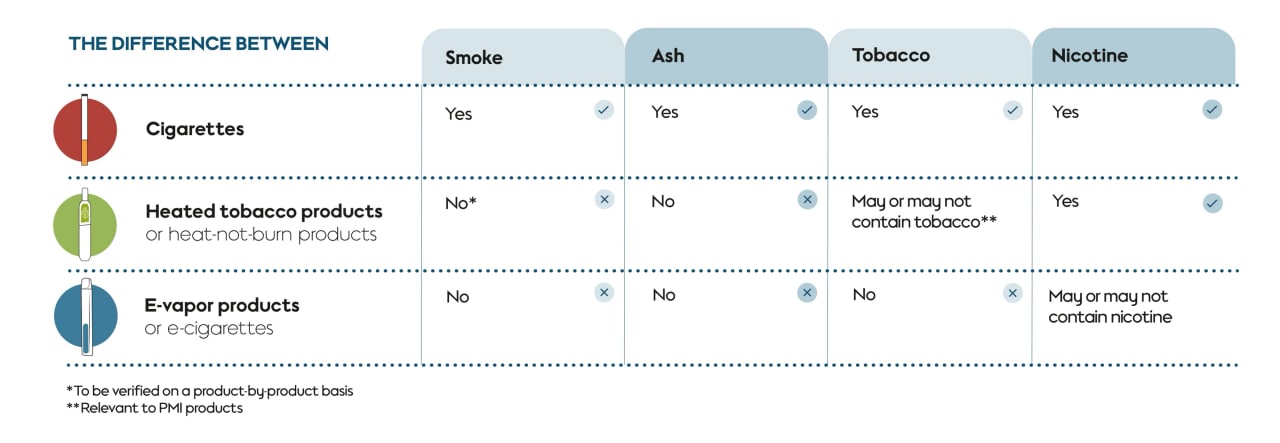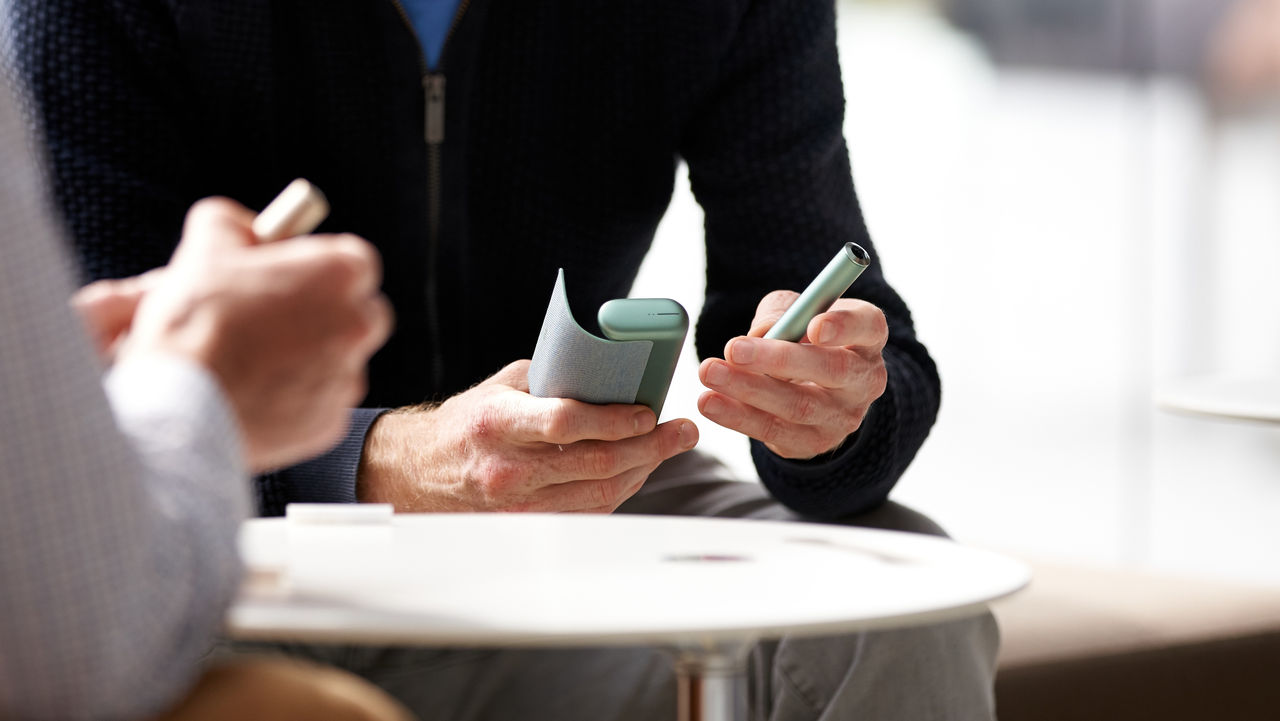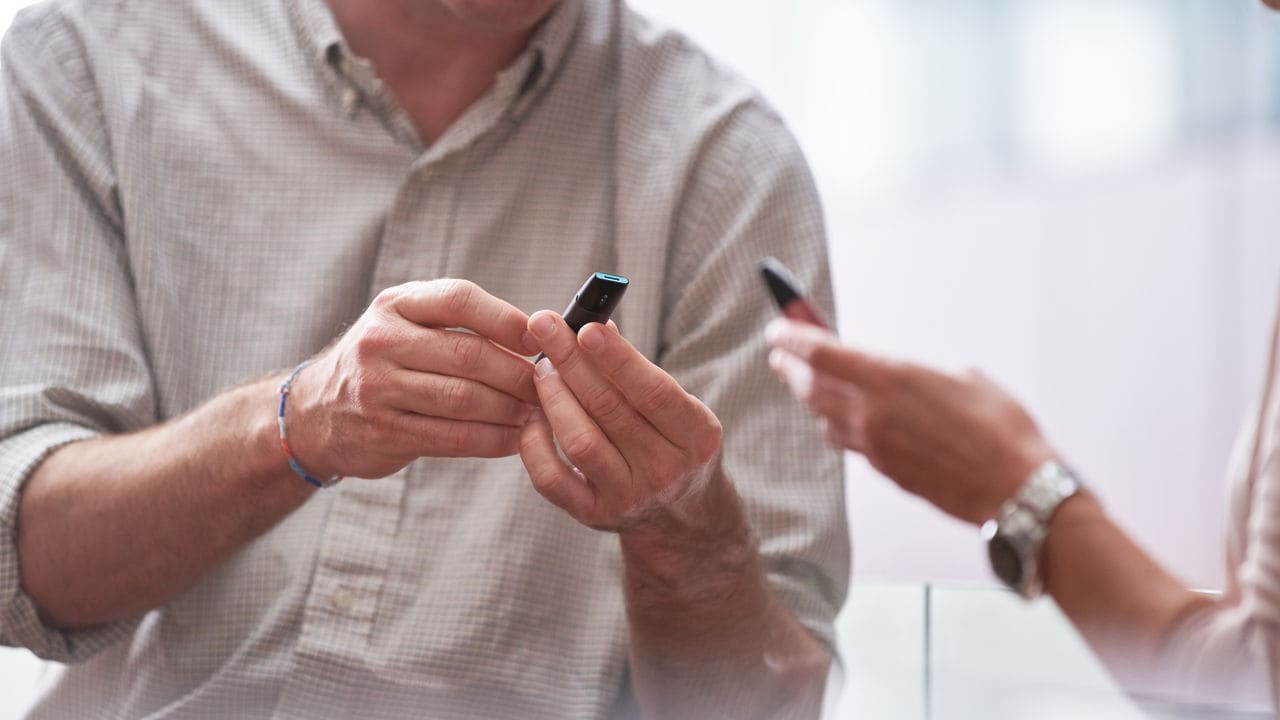Heated tobacco products, cigarettes, and e-cigarettes: What's the difference?
Why do we have alternatives to cigarettes?
When tobacco burns in cigarettes, it creates smoke which is a mix of thousands of chemicals and billions of solid and liquid particles. Within this complex mixture, about 100 chemicals have been associated with smoking-related disease by public health authorities.
Here’s the theory to these alternatives: If a nicotine-containing product doesn’t burn tobacco—and therefore doesn’t generate smoke—it should produce lower levels of harmful chemicals than a cigarette, and that should lead to reduced effects on the body compared with cigarettes.
This is why we, at Philip Morris International (PMI), have spent years transforming our core cigarette business with the aim of becoming a substantially smoke-free company. To achieve this, we design and market scientifically substantiated smoke-free products such as heated tobacco products (HTPs) and e-cigarettes*. We review here how these differ from one another and the research we have carried out to assess their relative risk compared with continued smoking.
What’s the difference between heated tobacco products and cigarettes?
HTPs are designed to heat tobacco instead of burning it, generating as a result a nicotine-containing aerosol with significantly lower levels of harmful chemicals compared with cigarette smoke. This is the biggest difference between HTPs and cigarettes.
An HTP comes in two main parts: the heating source and the tobacco itself. Some HTPs are electronic, but not all, and the exact temperature the tobacco is heated to varies from product to product. The important thing is that HTPs should avoid the high temperatures where tobacco is burnt. For our leading HTP, the Tobacco Heating System (THS)**, our findings show that it delivers nicotine similarly to a cigarette, but with lower levels of harmful chemicals on average.

E-cigarettes vs cigarettes. What’s the difference?
Like HTPs, e-cigarettes (or e-vapor products) don’t create smoke because they don’t burn tobacco. In fact, they don’t even contain tobacco. They heat an e-liquid that often contains nicotine to produce a nicotine-containing aerosol, which people usually call a vapor—hence the term “vaping”. By not burning tobacco, e-cigarettes don’t create smoke and so their aerosol should contain fewer harmful chemicals compared with cigarette smoke. Of course, each product should be tested to make sure this is indeed the case. Not all e-cigarettes contain nicotine, but the vast majority do.

Overview of the differences between cigarettes, heated tobacco products, and e-cigarettes
In summary, HTPs and e-cigarettes are different from cigarettes in that they don’t produce smoke nor ash and provide significantly lower levels of harmful chemicals.

Are heated tobacco products and e-cigarettes safe substitutes for cigarettes?
No. There is no safe alternative to cigarettes to date. Plus, it is challenging to speak in general terms about the safety of an entire category of smoke-free products, which includes various types of HTPs and e-cigarettes. Each product should be supported by clear scientific evidence.
You can read a simplified summary of our research on how we analyze the aerosol of smoke-free products, learn more about our findings on our smoke-free products, or watch the aerosol demonstration showing the difference between THS and cigarettes. We also provide further insights into the research we conduct on our smoke-free products.
One very important point: HTPs and e-cigarettes generally contain nicotine. Nicotine is addictive and not risk free, but it’s not the primary cause of smoking-related diseases. Smoke-free alternatives are only for adult smokers who would otherwise continue smoking. The best choice any smoker can make is to quit cigarettes and nicotine altogether.
*We also commercialize oral products for tobacco or nicotine use.
**THS is sold commercially as IQOS.
Open Science
We have committed to replacing cigarettes with better alternatives as rapidly as possible for adults who would otherwise continue to smoke. Our Open Science event series provides a platform for in-depth discussions on various topics, including tobacco harm reduction, among others.



